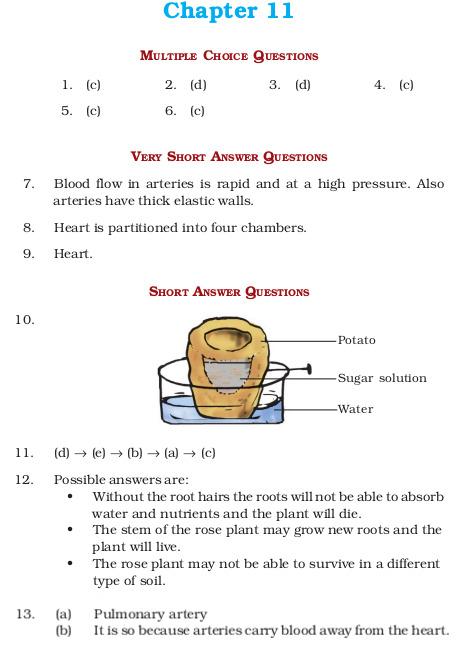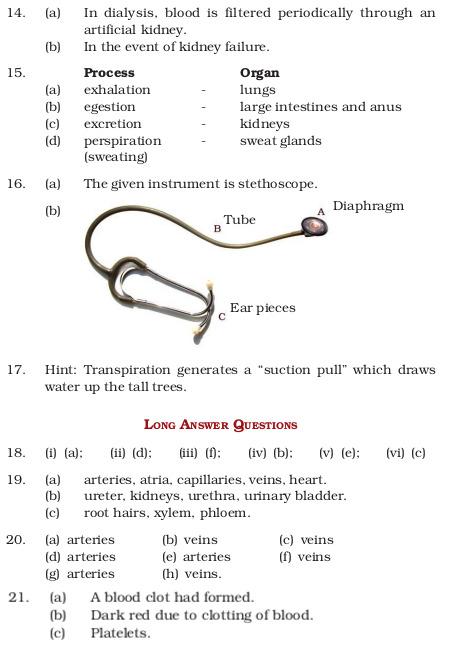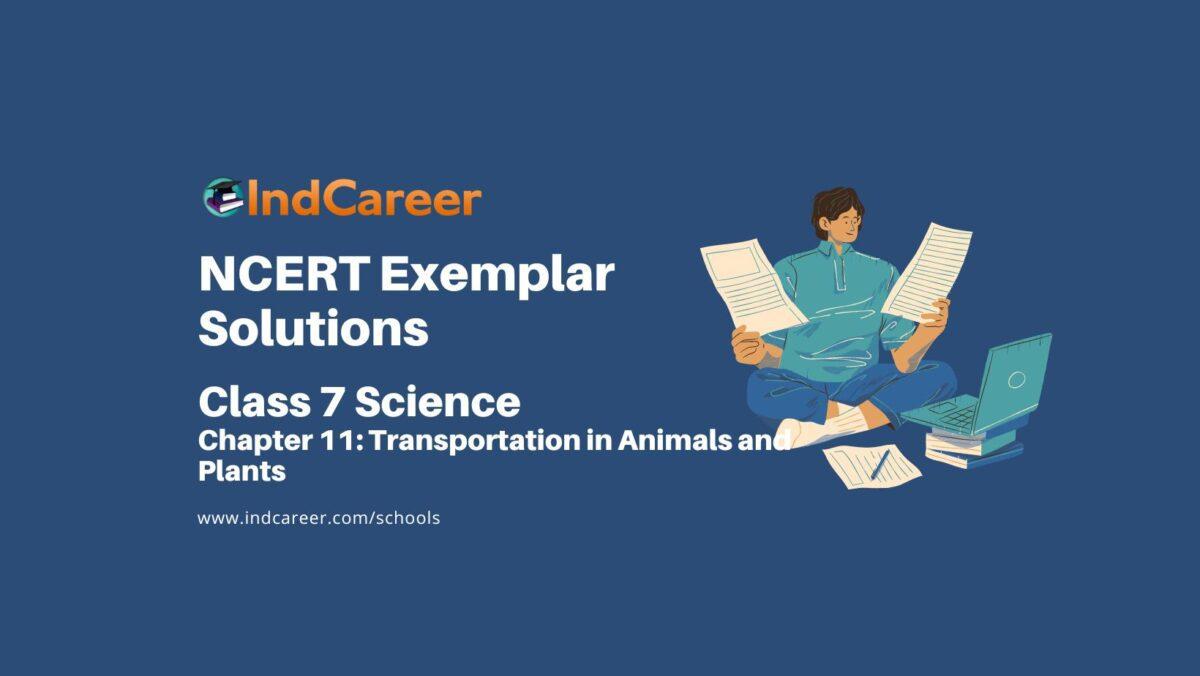NCERT Exemplar Class 7 Science Chapter 11: Transportation in Animals and Plants. NCERT Exemplar Solutions for Class 7 Science Chapter 11 Transportation in Animals and Plants prepare students for their Class 7 exams thoroughly.
Science problems and solutions for the Class 7 pdf are provided here which are similar to the questions being asked in the previous year’s board.
Contents
NCERT Exemplar Class 7 Science Chapter 11: Transportation in Animals and Plants
Class 7: Science Chapter 11 solutions. Complete Class 7 Science Chapter 11 Notes.
Multiple Choice Questions
- The muscular tube through which stored urine is passed out of the body is called –
- (a) kidney
- (b) ureter
- (c) urethra
- (d) urinary bladder
- They are pipe-like, consisting of a group of specialised cells. They transport substances and form a two-way traffic in plants. Which of the following terms qualify for the features mentioned above?
- (a) Xylem tissue
- (b) Vascular tissue
- (c) Root hairs
- (d) Phloem tissue
- The absorption of nutrients and exchange of respiratory gases between blood and tissues takes place in –
- (a) veins
- (b) arteries
- (c) heart
- (d) capillaries
- In which of the following parts of human body are sweat glands absent?
- (a) Scalp
- (b) Armpits
- (c) Lips
- (d) Palms
- In a tall tree, which force is responsible for pulling water and minerals from the soil?
- (a) Gravitational force
- (b) Transportation force
- (c) Suction force
- (d) Conduction force
- Aquatic animals like fish excrete their wastes in gaseous form as
- (a) Oxygen
- (b) Hydrogen
- (c) Ammonia
- (d) Nitrogen
Very Short Answer Type Questions
- Veins have valves which allow blood to flow only in one direction. Arteries do not have valves. Yet the blood flows in one direction only. Can you explain why?
- What is the special feature present in a human heart which does not allow mixing of blood when oxygen-rich and carbon dioxide-rich blood reach the heart?
- Name the organ which is located in the chest cavity with its lower tip slightly tilted towards the left.
Short Answer Type Questions
- Look at Figure 11.1. Draw another figure of the same set-up as would be observed after a few hours.
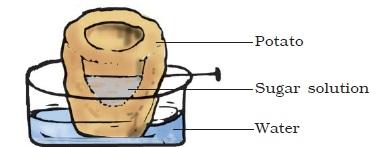
- Arrange the following statements in the correct order in which they occur during the formation and removal of urine in human beings.
- (a) Ureters carry urine to the urinary bladder.
- (b) Wastes dissolved in water is filtered out as urine in the kidneys.
- (c) Urine stored in urinary bladder is passed out through the urinary opening at the end of the urethra.
- (d) Blood containing useful and harmful substances reaches the kidneys for filtration.
- (e) Useful substances are absorbed back into the blood.
- Paheli uprooted a rose plant from the soil. Most of the root tips, with root hairs got left behind in the soil. She planted it in a pot with new soil and watered it regularly. Will the plant grow or die? Give reason for your answer.
- (a) Name the only artery that carries carbon dioxide-rich blood.
(b) Why is it called an artery if it does not carry oxygen-rich blood? - Boojho’s uncle was hospitalised and put on dialysis after a severe infection in both of his kidneys.
- (a) What is dialysis?
- (b) When does it become necessary to take such a treatment?
- Name the process and the organ which helps in removing the following wastes from the body.
- (a) Carbon Dioxide
- (b) Undigested food
- (c) Urine
- (d) Sweat
- Observe Figure 11.2 and answer the given questions:

- (a) Name the instrument.
- (b) Label the parts A, B and C.
- Paheli noticed water being pulled up by a motor-pump to an overhead tank of a five-storeyed building. She wondered how water moves up to great heights in the tall trees standing next to the building. Can you tell why?
Long Answer Type Questions
- Match the parts of the heart in Column I with the direction of flow of blood in Column II.
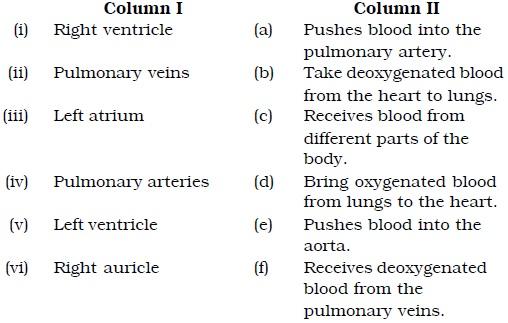
- Read the following terms given below.

Group the terms on the basis of the categories given below.- (a) Circulatory system of animals.
- (b) Excretory system in human.
- (c) Transport of substances in plants.
- Fill in the blanks of the following paragraph using just two words – arteries and veins.
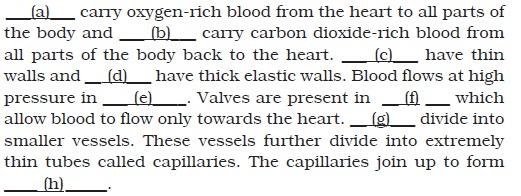
- While learning to ride a bicycle Boojho lost his balance and fell. He got bruises on his knees and it started bleeding. However, the bleeding stopped after some time.
- (a) Why did the bleeding stop?
- (b) What would be the colour of the wounded area and why?
- (c) Which type of blood cells are responsible for clotting of blood?
Answers
